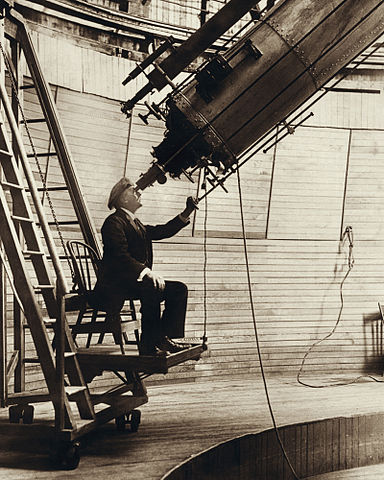 |
This is a file from the Wikimedia Commons. Information from its description page there is shown below.
Commons is a freely licensed media file repository. You can help.
|
 |
This is a featured picture, which means that members of the community have identified it as one of the finest images on the English Wikipedia, adding significantly to its accompanying article. If you have a different image of similar quality, be sure to upload it using the proper free license tag, add it to a relevant article, and nominate it. |
|
|
|

|
  This is a featured picture on the English language Wikipedia ( Featured pictures) and is considered one of the finest images. This is a featured picture on the English language Wikipedia ( Featured pictures) and is considered one of the finest images.
If you think this file should be featured on Wikimedia Commons as well, feel free to nominate it.
If you have an image of similar quality that can be published under a suitable copyright license, be sure to upload it, tag it, and nominate it.
|
|
|
| Description |
English: Percival Lowell observing Venus in the daytime from the observer's chair of the 24-inch (61 cm) Alvan Clark & Sons refracting telescope, installed in the summer of 1896 at the Lowell Observatory, which he established in Flagstaff, Arizona (USA). Although known for observing Mars, this image has a long running attribution of "Percival Lowell observing the planet Venus in the daytime", something he did from 1896 onward, observing the planet high in the daytime sky with the telescope's lens stopped down to 3 inches in diameter. This image of an older Lowell was taken in 1914. Also given a date of October 17, 1914. |
| Date |
1914 |
| Source |
Reconstructed from several online sources by Joe Haythornthwaite |
| Author |
Unknown |
Permission
( Reusing this file) |
PD because of age
|
References
- ↑ Sources for the image attribution being Our Wonderful Universe: An easy introduction to the study of the heavens by Clarence Augustus Chant, published by G.G. Harrap & Company Ltd. in 1928 (see page 92), and A Passion for the Planets: Envisioning Other Worlds, from the Pleistocene to the Age of the Telescope by William Sheehan, published by Springer in 2010 (see page 35).
- ↑ Per User:nagualdesign, date "1914" confirmed by Lowell Observatory Archives, holder of the original glass plate.
- ↑ Popular Astronomy , Volume 29; Volume 1921, Goodsell Observatory of Carleton College, 1921, Percival Lowell, "An Afterglow" book review, page 597
| Public domainPublic domainfalsefalse |
 |
This image (or other media file) is in the public domain because its copyright has expired.
This applies to Australia, the European Union and those countries with a copyright term of life of the author plus 70 years.
 You must also include a United States public domain tag to indicate why this work is in the public domain in the United States. Note that a few countries have copyright terms longer than 70 years: Mexico has 100 years, Colombia has 80 years, and Guatemala and Samoa have 75 years, Russia has 74 years for some authors. This image may not be in the public domain in these countries, which moreover do not implement the rule of the shorter term. Côte d'Ivoire has a general copyright term of 99 years and Honduras has 75 years, but they do implement the rule of the shorter term. You must also include a United States public domain tag to indicate why this work is in the public domain in the United States. Note that a few countries have copyright terms longer than 70 years: Mexico has 100 years, Colombia has 80 years, and Guatemala and Samoa have 75 years, Russia has 74 years for some authors. This image may not be in the public domain in these countries, which moreover do not implement the rule of the shorter term. Côte d'Ivoire has a general copyright term of 99 years and Honduras has 75 years, but they do implement the rule of the shorter term.
|
|
This file has been identified as being free of known restrictions under copyright law, including all related and neighboring rights.
|
File usage
The following pages on Schools Wikipedia link to this image (list may be incomplete):
Schools Wikipedia has been carefully checked to give you the best learning experience. In 133 nations around the world, SOS Children's Villages works to bring better education and healthcare to families in desperate need of support. There are many ways to help with SOS Children's Villages.



